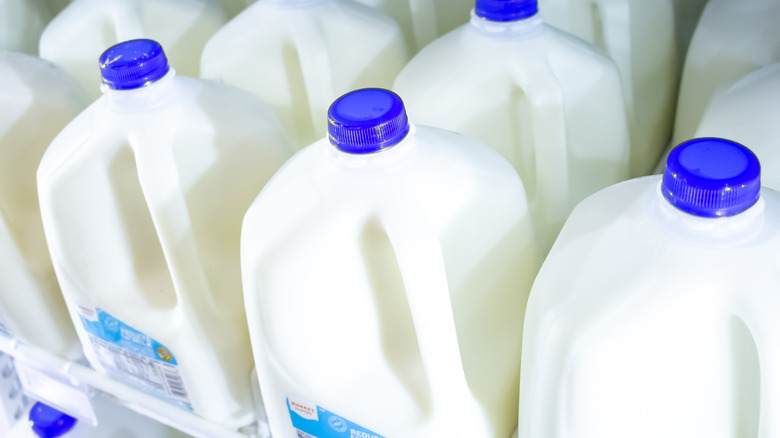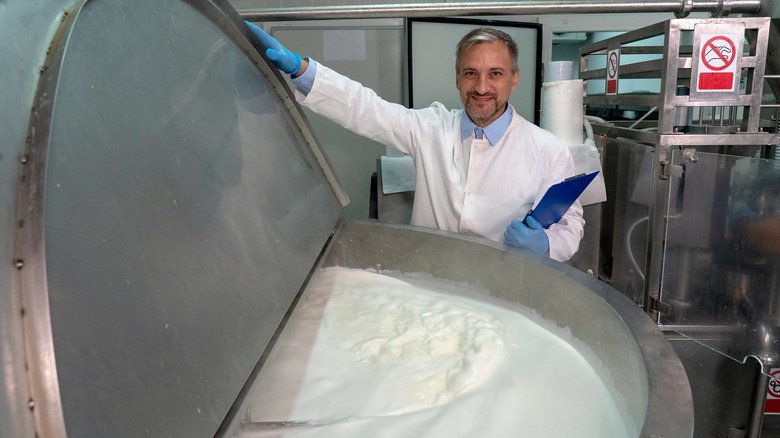Ultra-Pasteurized Versus Pasteurized Milk: Which Has A Better Nutritional Value?
Let's set aside the raw milk debate for a while. Pasteurization of milk — heating it for a short time to kill bacteria, before quickly cooling it — has been done for decades in the U.S. to protect the public from potentially harmful food-borne bacteria like salmonella, E. coli, and listeria. Erin Rossi, RD, LD, told the Cleveland Clinic, "A little processing goes a long way in preventing the illnesses associated with raw milk. Pasteurizing milk — heating it to 161 degrees [F] for just 20 seconds — kills any and all bacteria." But you may have noticed another label on the milk jug, too: UHT or ultra-high temperature or ultra-pasteurized. What's the difference between pasteurized and ultra-pasteurized? And is one healthier than the other?
Ultra-pasteurization takes the process to the next level. Instead of being heated to 161 F for a minimum of 15 seconds (like with regular pasteurization), UHT heats milk to 280 F for at least two seconds and then cools it almost as quickly (via Livestrong). The major difference in time and temperature makes it possible for UHT milk to stay on shelves much longer before being used — for up to six months if stored properly.
Pasteurization kills potentially harmful bacteria
Pasteurization provides added convenience for those of us who buy in bulk or have a tendency to let those milk cartons sit in the fridge for days before being opened. It's important to note that, once opened, both pasteurized and ultra-pasteurized milk should be consumed in about the same amount of time: no more than five to seven days past the date printed on the carton (EatByDate.com).
There are subtle nutritional differences between pasteurized and ultra-pasteurized milks. Exposing milk to the heat of pasteurization may slightly decrease some of its nutritional quality. A University of Minnesota study showed that pasteurizing milk caused it to lose between 3 and 10% of certain vitamins and may decrease the body's ability to absorb the milk's vitamin B12 (via Livestrong). It follows logic that ultra-pasteurization could intensify these effects, resulting in further nutrient loss. But, the increased shelf life could make it worth it to some buyers. Finally, the high heat used in ultra-pasteurization alters some of the milk's flavor compounds, resulting in a somewhat "cooked" taste (via Cooking Light).
Bottom line? There may be some nutritional differences between the two types of pasteurization, but they are not significant enough to make experts recommend one type of milk over the other. Milk in any form still comes with many important nutrients and, for those who can tolerate it, can be part of a healthy diet.


